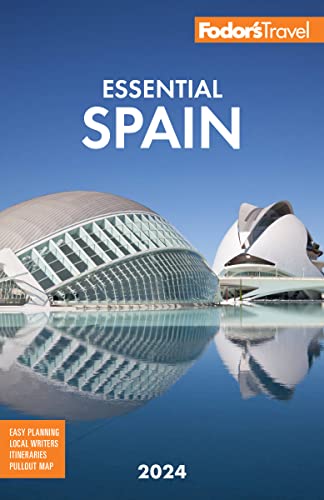Madrid to the Alhambra, 10-day Itinerary
This trip takes in the best of vibrant Madrid and its world-class art museums and showcases some of Castile's historic gems before whisking you to the Moorish south where Córdoba's majestic mosque, Seville's fragrant orange blossoms, and Granada's "heaven on earth" await.
Days 1–3: Madrid
Start the day with a visit to either the Prado, the Museo Thyssen-Bornemisza, or the Centro de Arte Reina Sofía. Then head to the elegant Plaza Mayor—a perfect jumping-off point for a tour of the Spanish capital. To the west, see the Plaza de la Villa, Palacio Real (the Royal Palace), Teatro Real (Royal Theater), and the royal convents; to the south, wander around the maze of streets of La Latina and El Rastro and try some local tapas.
On Day 2, visit the sprawling Barrio de las Letras, centered on the Plaza de Santa Ana. This was the favorite neighborhood of writers during the Spanish golden literary age in the 17th century (Cervantes lies buried under a convent nearby), and it's still crammed with theaters, cafés, and good tapas bars. It borders the Paseo del Prado on the east, allowing you to comfortably walk to any of the art museums in the area. If the weather is pleasant, take an afternoon stroll in the Parque del Buen Retiro.
For your third day in the capital, wander in Chueca and Malasaña, the two funky hipster neighborhoods most favored by young madrileños. Fuencarral, a landmark pedestrianized street that serves as the border between the two, is one of the city's trendiest shopping enclaves. From there you can walk to the Parque del Oeste and the Templo de Debod—the best spot from which to see the city's sunset. Among the lesser-known museums, consider visiting the captivating Museo Sorolla, Goya's frescoes and tomb at the Ermita de San Antonio de la Florida, or the Real Academia de Bellas Artes de San Fernando for classic painting. People-watch at any of the terrace bars in either Plaza de Chueca or Plaza 2 de Mayo in Malasaña.
Logistics: If you're traveling light, the subway (Metro Línea 8) or the bus (No. 203 during the day and N27 at night) will take you from the airport to the city for €5. The train costs €2.60 and a taxi is a fixed price of €30. Once in the center consider walking or taking the subway rather than cabbing it in gridlock traffic.
Days 4 and 5: Castilian Cities
There are several excellent options for half- or full-day side trips from Madrid to occupy Days 4 and 5. Toledo and Segovia are two of the oldest Castilian cities—both have delightful old quarters dating back to the Romans. There's also El Escorial, which houses the massive monastery built by Felipe II. Two other nearby towns also worth visiting are Aranjuez and Alcalá de Henares.
Logistics: Toledo and Segovia are stops on the high-speed train line (AVE), so you can get to either of them in a half hour from Madrid. To reach the old quarters of both cities, take a bus or cab from the train station or take the bus from Madrid. Buses and trains both go to El Escorial. Reach Aranjuez and Alcalá de Henares via the intercity train system.
Day 6: Córdoba or Extremadura
Córdoba, the capital of both Roman and Moorish Spain, was the center of Western art and culture between the 8th and 11th centuries. The city's breathtaking Mezquita (mosque), which is now a cathedral, and the medieval Jewish Quarter bear witness to the city's brilliant past. From Madrid you could also rent a car and visit the lesser-known cities in the north of Extremadura, such as Guadalupe and Trujillo, and overnight in Cáceres, a UNESCO World Heritage Site, then return to Madrid the next day.
Logistics: The AVE will take you to Córdoba from Madrid in less than two hours. One alternative is to stay in Toledo, also on the route heading south, and then head to Córdoba the next day, although you need to return to Madrid by train first. Once in Córdoba, take a taxi for a visit out to the summer palace at Medina Azahara.
Days 7 and 8: Seville
Seville's cathedral, with its tower La Giralda, Plaza de Toros Real Maestranza, and Barrio de Santa Cruz are visual feasts. Forty minutes south by train, you can sip the world-famous sherries of Jerez de la Frontera, then munch jumbo shrimp on the beach at Sanlúcar de Barrameda.
Logistics: From Seville's AVE station, take a taxi to your hotel. After that, walking and hailing the occasional taxi are the best ways to explore the city. A rental car is the best option to reach towns beyond Seville, except for Jerez de la Frontera, where the train station is an architectural gem in its own right.
Days 9 and 10: Granada
The hilltop Alhambra palace, Spain's most visited attraction, was conceived by the Moorish caliphs as heaven on earth. Try any of the city's famous tapas bars and tea shops, and make sure to roam the magical, steep streets of the Albayzín, the ancient Moorish quarter.
Logistics: The Seville–Granada leg of this trip is best accomplished by renting a car; Antequera makes a good quick stop on the way. However, the Seville–Granada trains (four daily, about 3½ hours, €30) are one alternative. Another idea is to head first from Madrid to Granada, and then from Granada to Seville via Córdoba.




